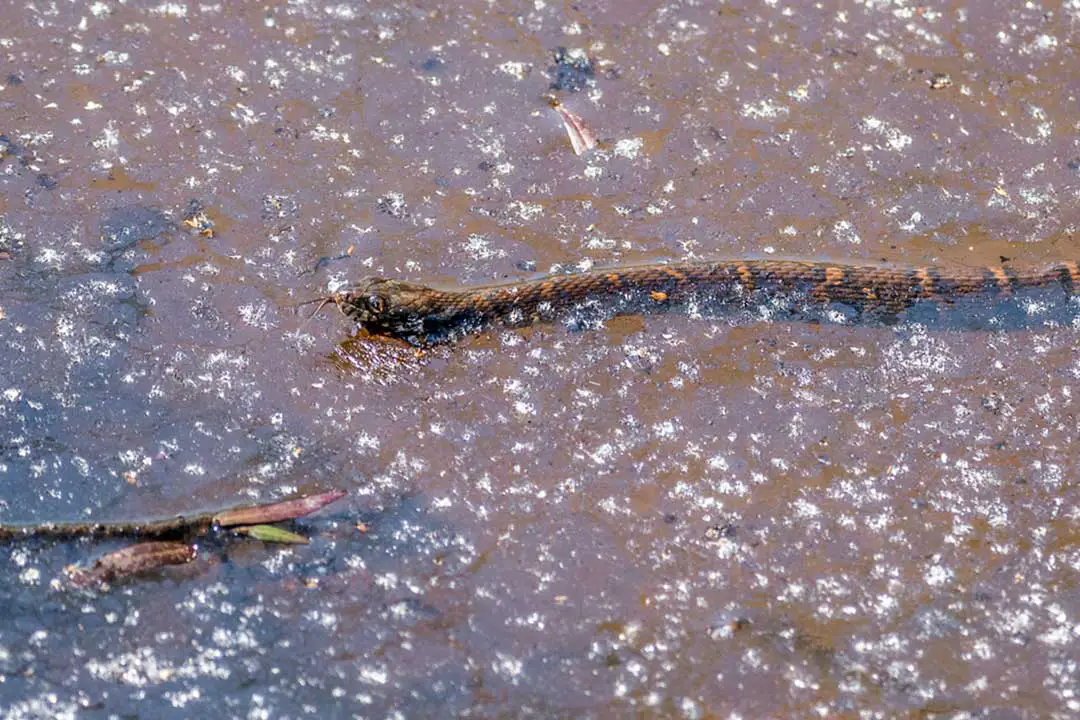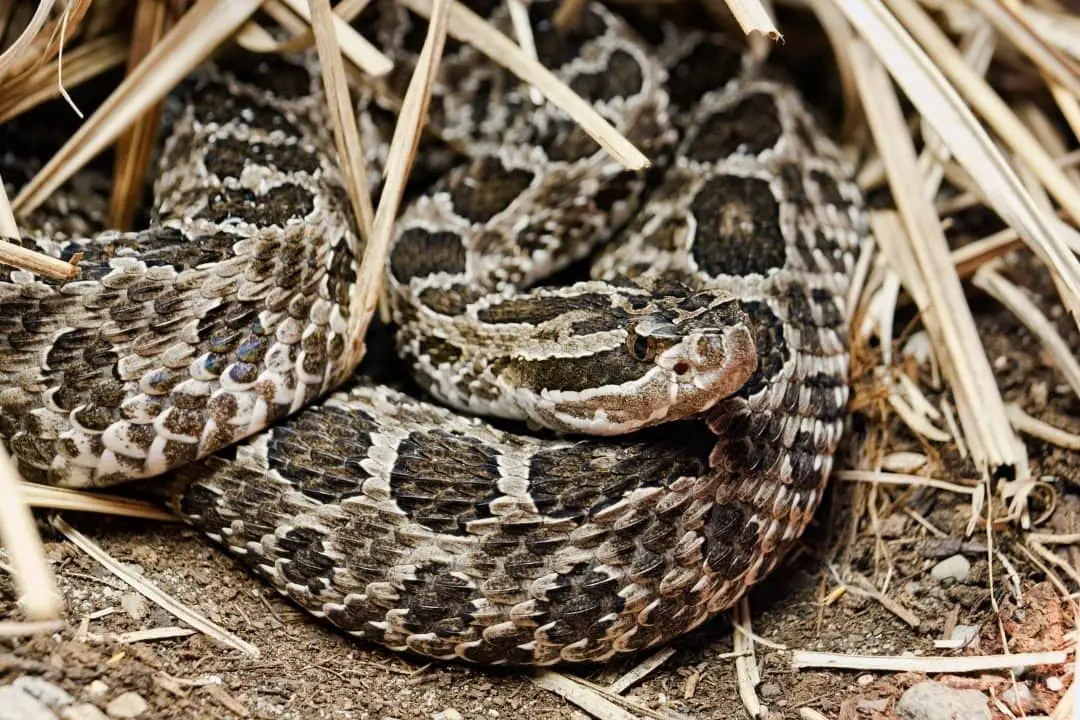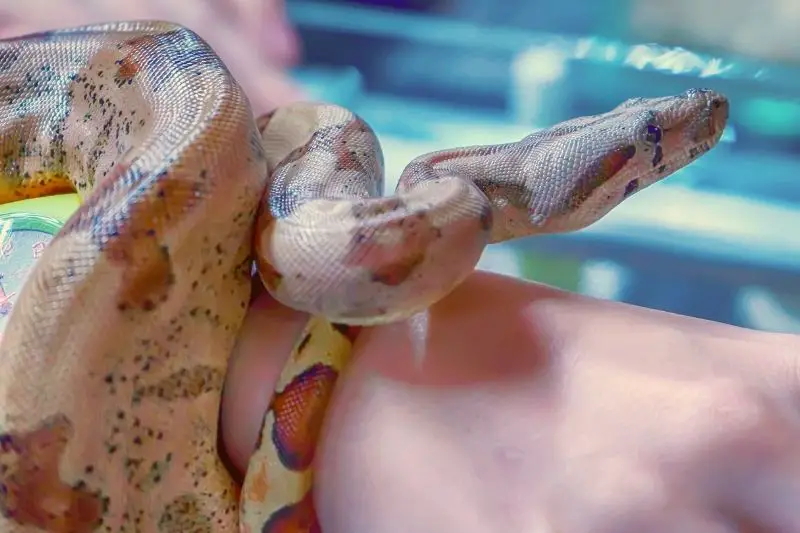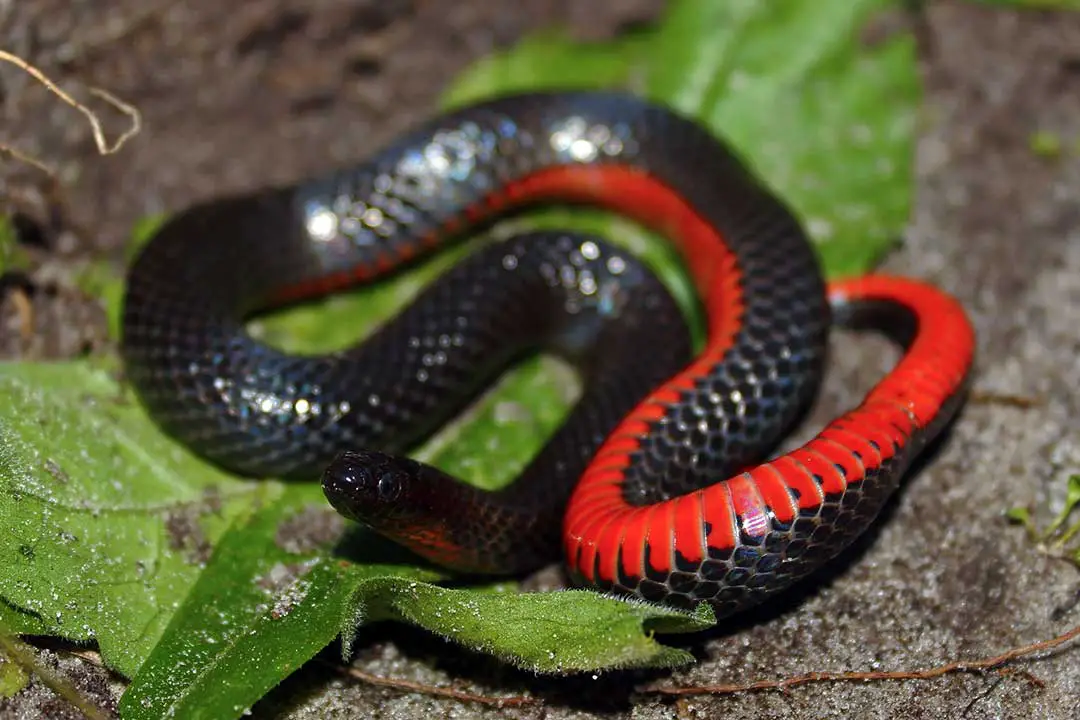Many snakes can be found near water. Like all animals, snakes need water to live. Many snakes will also wait near water sources to catch animals trying to drink.
However, these snakes are not properly water snakes.
Water snakes are either fully or semi-aquatic and eat aquatic prey. Many will stay on land to hunt or rest, but they will flee into the water if confronted.
Some may even be incapable of going far from water due to high humidity needs.
We will go over these water snakes and where in Georgia you can find them.
We hope this helps you learn how to identify the many species of water snake native to the state.
1. Northern Cottonmouth
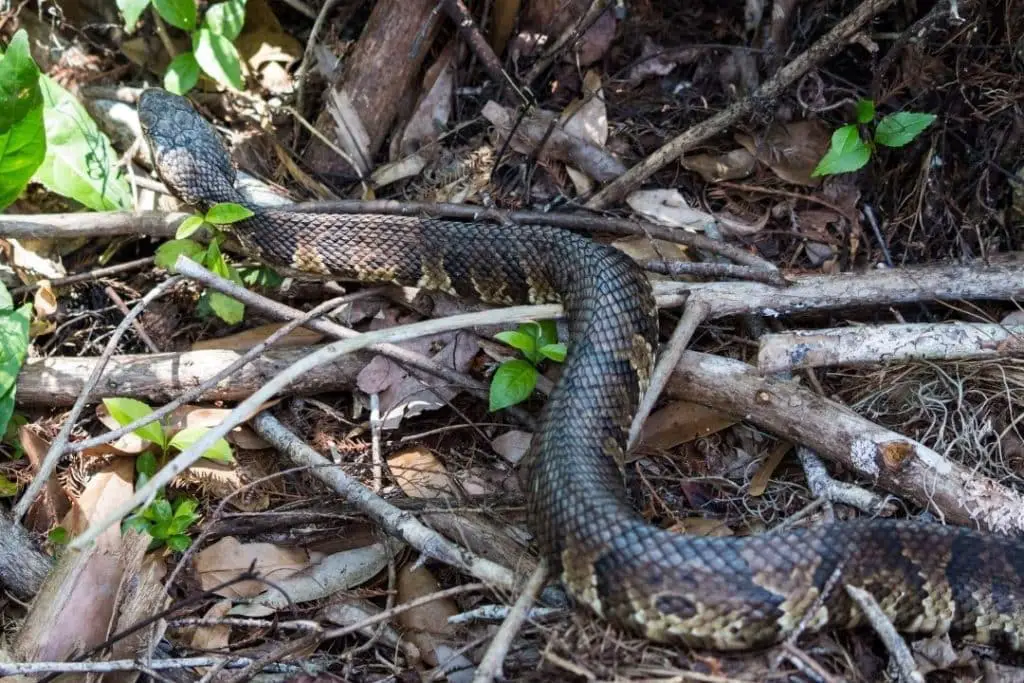
The northern cottonmouth (Agkistrodon piscivorus) is also sometimes known as the water moccasin.
These semi-aquatic snakes are named for their stark white mouths that they will open as part of their threat display.
They are venomous water snakes and you need to be very cautious around these snakes. Adults are typically under 3 feet with males being larger on average.
They are dark gray to black with a wide head. These snakes are typically found near slow-moving or still water, but they can wander far from water sources.
They typically eat fish and frogs but will eat anything they can catch. Bites are rare, but serious since their venom destroys tissue.
These bites are rarely fatalbut can cause bleeding, bruising, swelling, and scarring. They are mainly found in the south of the state, but you should always be cautious.
Check my list of venomous snakes in georgia for more venomous species in the state.
2. Florida Cottonmouth
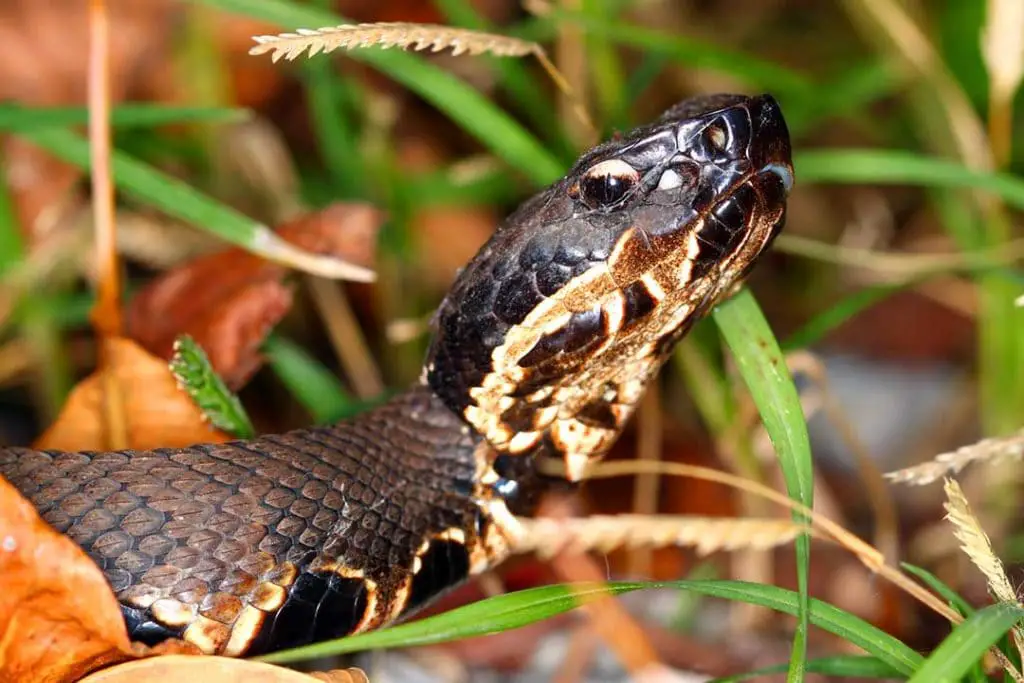
The Florida cottonmouth (Agkistrodon conanti) is the other venomous water snake of Georgia.
They are found in the south if the state and their range overlaps with the northern cottonmouth. They are heavy-bodied snakes that can get up to 4 feet long.
They have bands of light and dark that get darker with age. They tend to stick near water sources, but will also be found in the woodlands around bodies of water.
They eat aquatic and terrestrial prey. They typically hold onto aquatic prey, but will bite and release terrestrial prey. They will then track the prey until it succumbs to the venom.
3. Striped Crayfish Snake
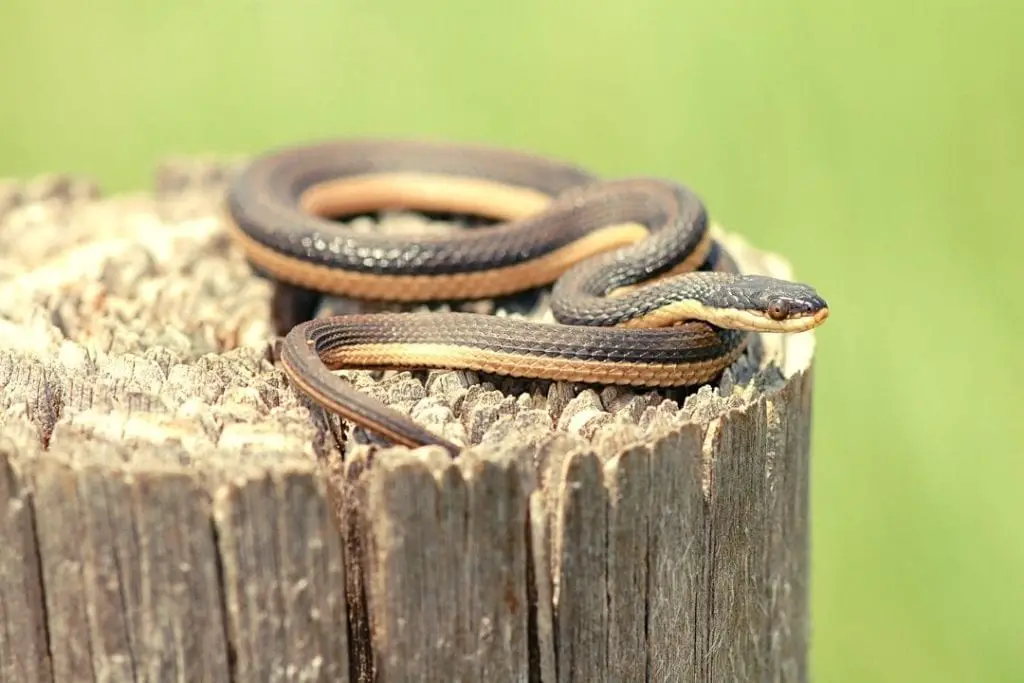
The striped crayfish snake (Liodytes alleni) does not exceed 20 inches.
They are a glossy brown-yellow. They are found in slow-moving water in the southeast of Georgia. They eat crayfish by coiling around it and swallowing it tail first while it is still alive.
Their unique teeth allow them to hang onto the hard-shelled animals.
4. Florida Green Water snake
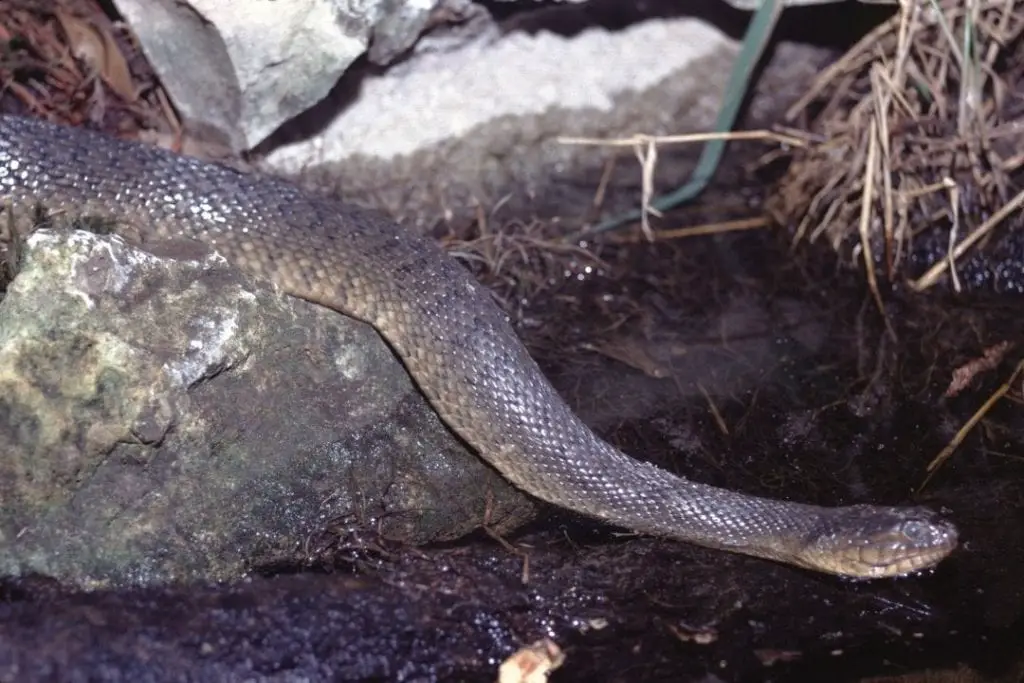
The Florida green water snake (Nerodia floridiana) is also known as the eastern water snake. This is a large snake that can get up to 55 inches long.
They can be shades of brown, gray, green, and orange. Most adults have little patterning, but juveniles can have some banding.
They are only found in the south and east of the state in two small pockets. They only live in calm and shallow bodies of water. They eat fish and amphibians which they swallow whole.
5. Glossy Crayfish Snake / Glossy Swampsnake
The glossy swampsnake (Liodytes rigida) is a small brown to olive snake with glossy scales. They do not typically get over 2 feet long and may have dark stripes.
Their belly is yellow with rows of black dots or half moon shapes. They prefer slow-moving water such as swamps. They are mainly found in the south of Georgia.
They eat primarily crayfish and have special teeth that allow them to get through the shells.
6. Banded Water Snake
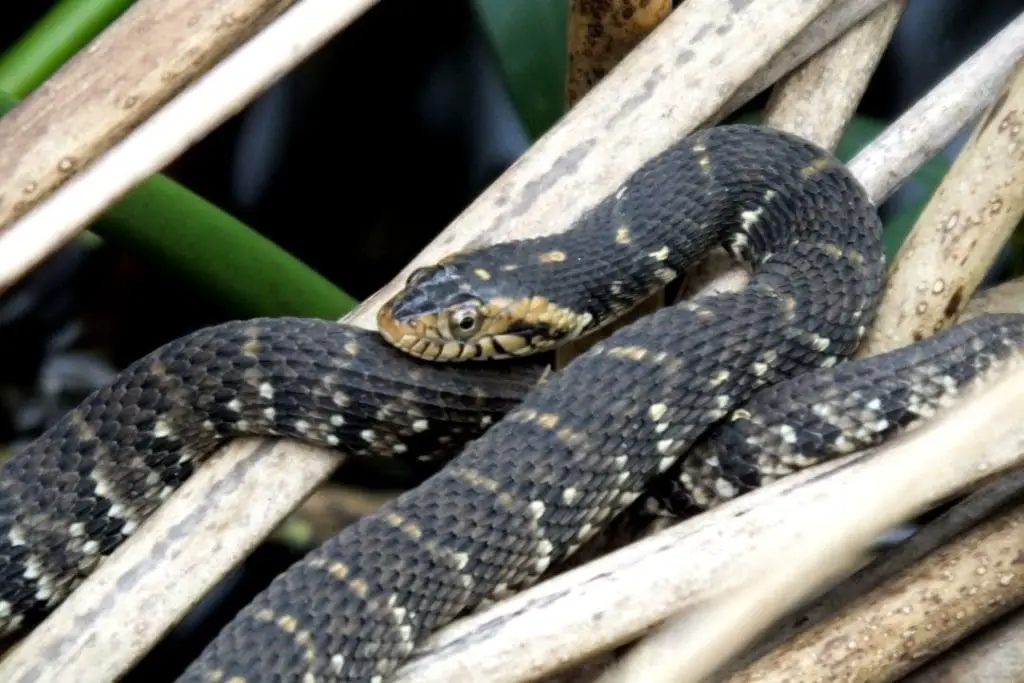
The banded water snake (Nerodia fasciata fasciata) is a snake that can reach between 2 and 4 feet in length.
They can be gray, greenish, or brown with darker bands. They can be found on branches above nearly any freshwater source in their range.
Banded water snakes are a southern water snake species most common in the southern half of Georgia.
They are nocturnal and hunt fish and frogs which they consume alive. Since they flatten their heads as a defensive mechanism, they are frequently mistaken for cottonmouths and killed.
7. Northern Water Snake
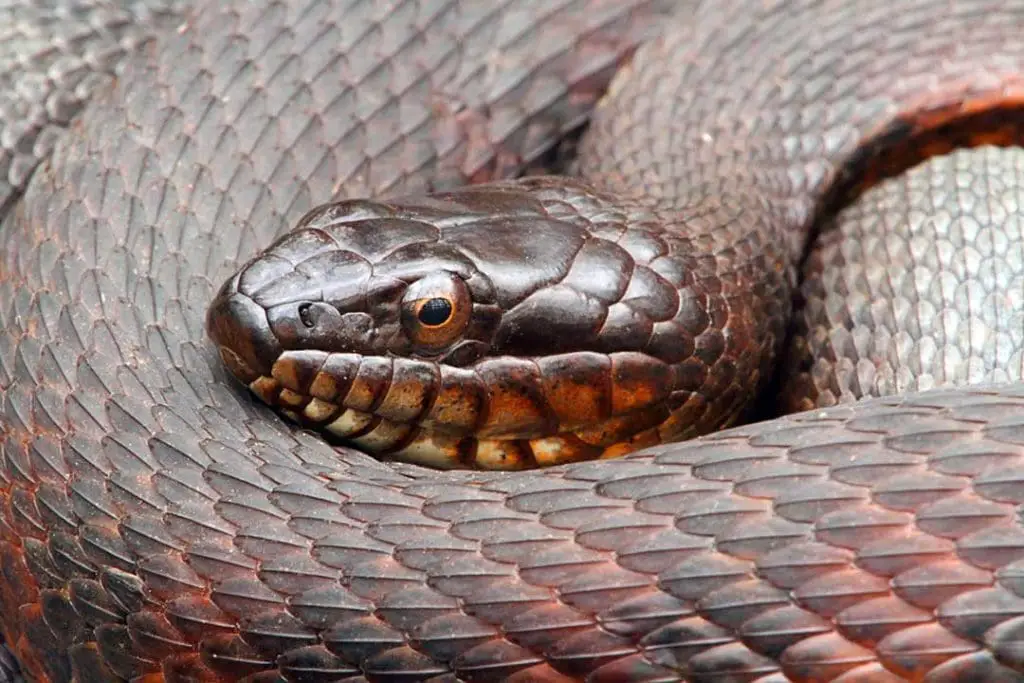
The Northern water snake (Nerodia sipedon sipedon) is a subspecies of the common water snake.
The Northern water snake is only found in the very far northeast of the state. They are a pale gray to dark brown with reddish-brown to dark black bands across the back.
The patterning is more obvious in juveniles. Adults turn darker and may seem to be a solid brown or black. They prefer slow-moving or standing water.
They will flee into the water if disturbed, but if they are caught they will hiss, musk, or bite. They are nonvenomous and generally shy.
You will most likely see them basking on rocks or logs close to the water. They eat a number of animals including amphibians, fish, and mammals. Like other members of the genus, they are active hunter and will chase down their prey.
8. Midland Water Snake
The Midland water snake (Nerodia sipedon pleuralis) is found over more of the state.
It is still only found in the north of Georgia. This is another subspecies of the common water snake. They tend to be light gray but some animals are brown or red in tone.
They have crossed bands near the head that turn into squarish blotches down the body. Adults will be darker than juveniles. Like the northern water snake, they prefer slow-moving or still bodies of water.
They can be found resting on rocks or logs near ponds, slow streams, marshes, and lakes. They are known for herding fish into the shallows to eat multiple animals at once.
They are defensive and will bite it if they are not allowed to flee. Their populations are stable, but they are at risk of habitat loss.
9. Queen Snake

The queen snake (Regina septemvittata) is entirely reliant on water. They rarely leave bodies of water since they become dehydrated very quickly.
They tend to be around 2 feet as adults but a large adult can be 3 feet long.
They are slender animals that tend to be a drab brown or olive green. They have two light stripes that go down their sides. They have four stripes that go down the length of their yellow or tan belly.
They tend to be found near moving water in the north of Georgia. They are diurnal and are normally seen basking on rocks or logs by the water.
They may also hide under rocks by the edge of the water. They are specialists that feed almost exclusively on crayfish. They target freshly melted crayfish by prodding under rocks and other hiding places. They are not venomous and rarely bite. They prefer to flee or may produce a foul-smelling musk if captured.
10. Brown Water Snake
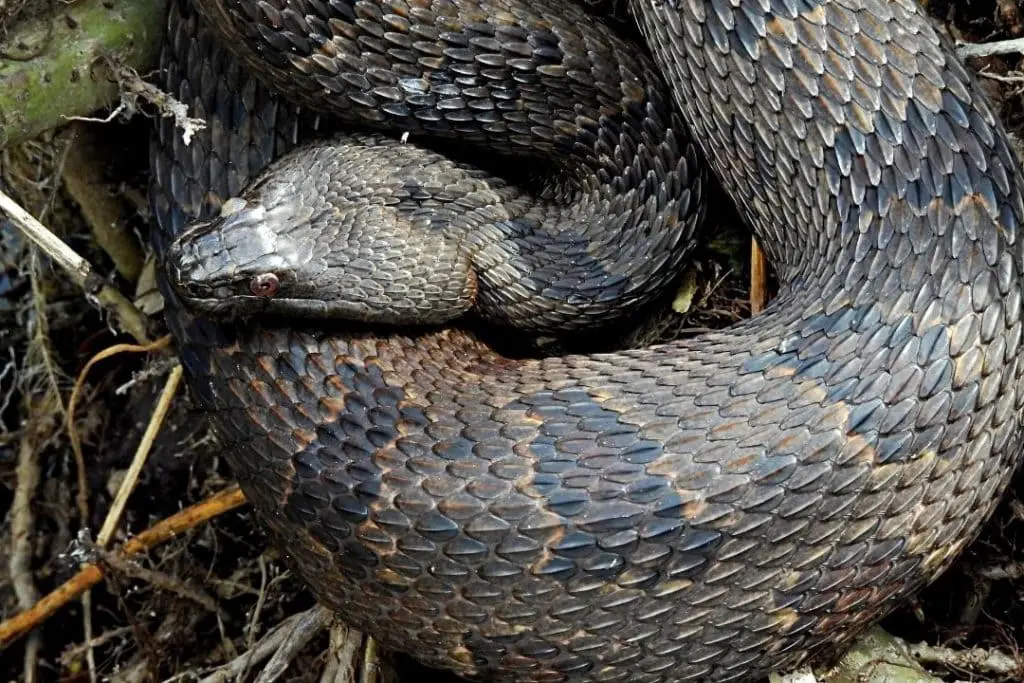
The brown water snake (Nerodia taxispilota) is a snake that can be light to dark brown with darker brown blotches. They can be found in much of Georgia aside from the north.
They are typically found near permanent water sources like rivers and lakes. They eat primarily fish, with young catfish being a favorite.
They are very good climbers and will hang out on high branches. If disturbed, they will drop into the water. This has led to them falling into passing boats.
11. Plain-Bellied Water snake
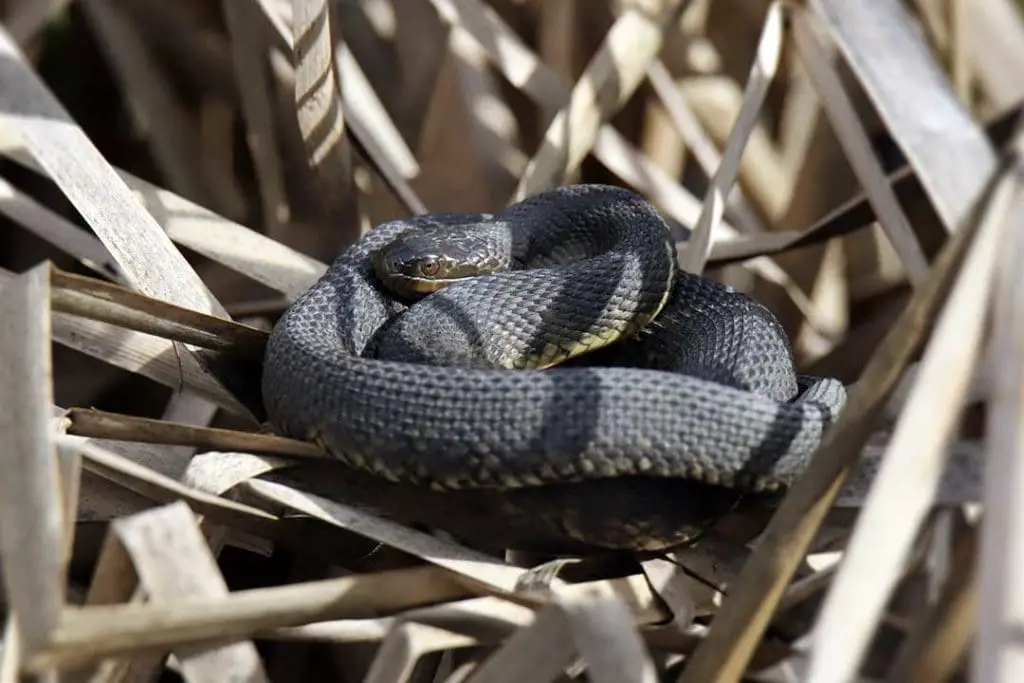
The plain-bellied water snake (Nerodia erythrogaster) can be found mainly in the central portions of the state. They are unusual among the water snakes since they will stay further from water.
During humid weather, they may stray much farther than you would expect. They eat both aquatic and terrestrial prey animals.
They are unusual since they will wait for prey and ambush it instead of chasing it down like other watersnake. They are solid in color and may be olive, brown, black, or gray.
They can be up to 40 inches long and have a thick body. Their belly is a solid color and may be anywhere between red and yellow.
They have other common names such as redbelly, yellowbelly, copperbelly, or blotches watersnake. They tend to be defensive since they are common prey for everything from hawks to bass.
12. Black Swampsnake
The black swampsnake (Liodytes pygaea) is only 11-15 inches long and has a glossy black color. They have a bright orange or red belly.
They are only found in the south of the state. They are almost entirely aquatic and females even give birth to live young in shallow water. They mainly eat small fish, frogs, or worms.
Conclusion
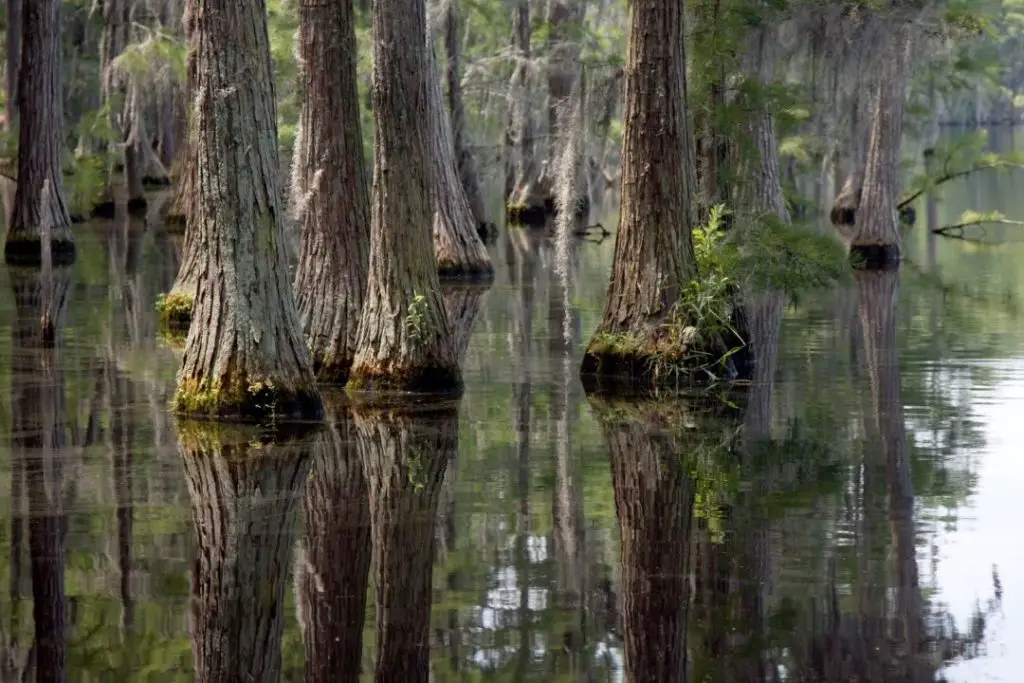
Georgia has a number of aquatic habitats and is home to a large variety of water snakes species.
There are more snake species in georgia, checkout our complete article about snakes in georgia.
Most georgia snakes are harmless, but it is still best to leave them alone. If you have any questions or comments, please leave them below.
